BACKGROUND & ECOLOGY:
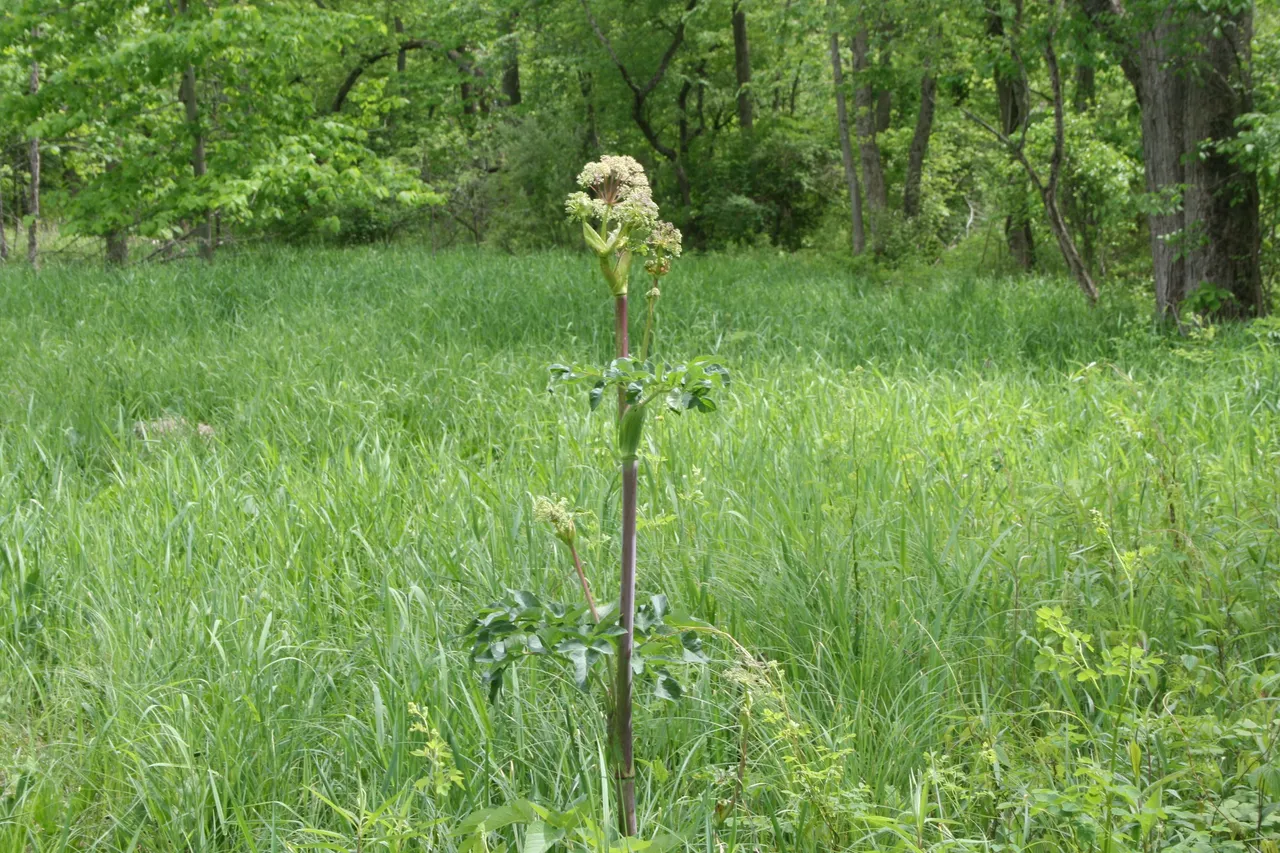
Known Range
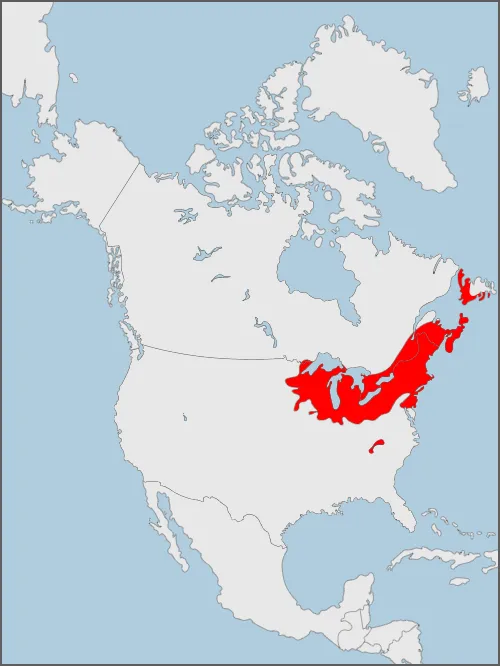
Great Angelica (Angelica atropurpurea), also known as Purplestem Angelica, is a biennial flowering plant species native to Eastern North America from Newfoundland and Labrador, Canada to North Carolina, USA and as far West as the Great Lakes. It is most commonly found growing along riverbanks and swampy woodlands with its flowers beginning to bloom in the month of June.
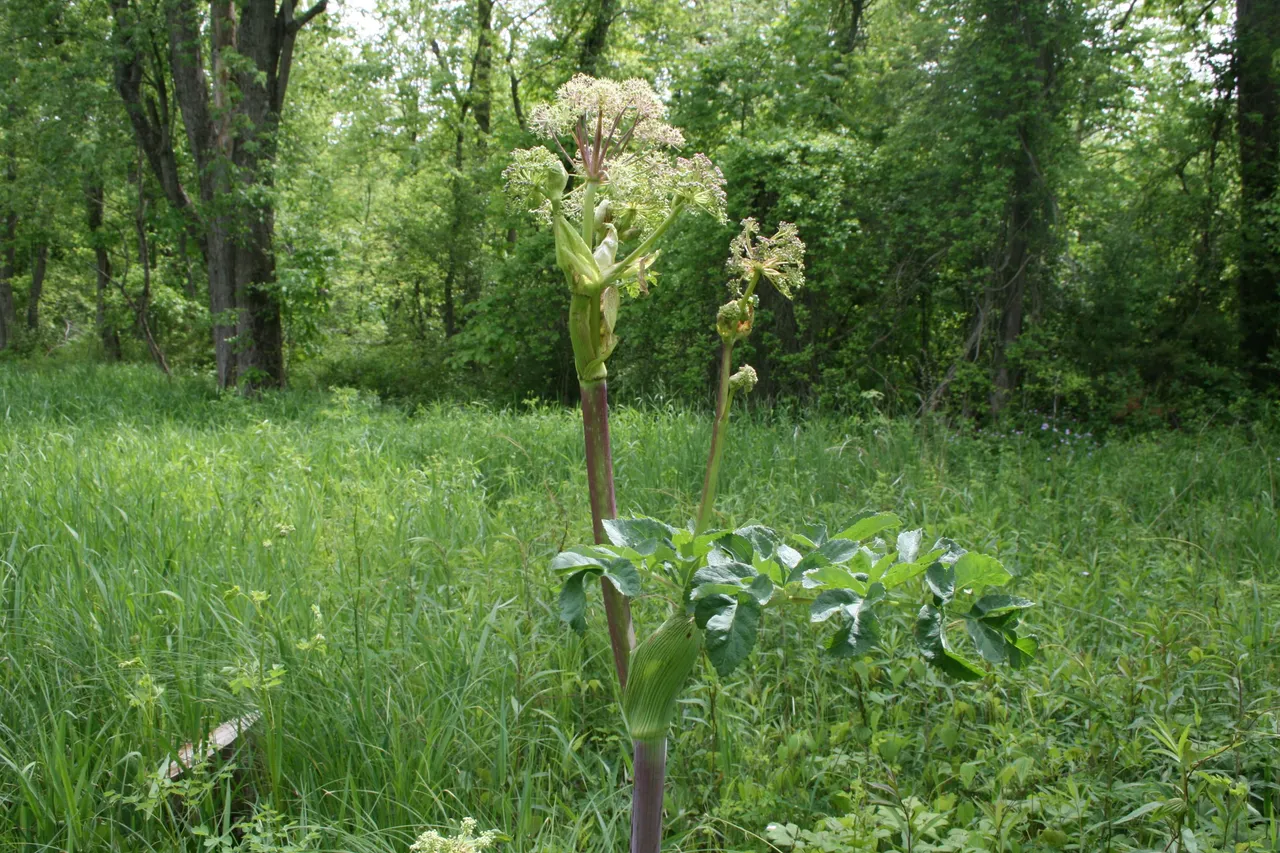
While the plant is held in high reverence by many for its healing properties, one must be especially careful with their identification of this plant species if they intend on ingesting it in any form. Some of Great Angelica's closest lookalike species include highly noxious and poisonous plants such as Giant Hogweed as well as the deadly toxic Water Hemlock. This guide is meant to aid with the identification of the species as well as provide information regarding its ecology and historical use. I do not recommend ingesting this plant in any form unless you are certain of its identity and have consulted the input of a medical and/or botanical expert. I do not take responsibility for any injury or death that may result from the misidentification of this species or the handling/ingestion of any of its noxious or toxic look-alikes.
DESCRIPTION & LOOK-ALIKE SPECIES:

Standing between 1.8 - 2.4 m in height, the flowering generation of the species' most striking features include its smooth purple stem, large compound leaves, and the globe-like shape of it flower clusters (umbrels). The stem of the plant is hairless with a purple-lavender hue that changes uniformly across the length of each internode; color splotches tend to be minimal to nonexistent. These are key differentiating features from one of Great Angelica closest look-alike species, Giant Hogweed, which possesses both red-purple splotch marks as well as coarse white hairs. Being able to differentiate these species is a valuable skill as the sap of the Giant Hogweed is phototoxic due to the presence of furanocoumarin in its cells. If the sap of Giant Hogweed comes in contact with skin and is then exposed to direct sunlight, most will develop Phytophotodermatitis: a condition characterized by severe blistering and scaring of the affected skin. While furanocoumarin is present in Great Angelica as well, its concentration in not nearly as high as it is in Giant Hogweed, making it far less dangerous to handle unprotected. Other key differentiating features of Giant Hogweed include that it may grow up to 5 m in height and produces prominent, white flowers.
Great Angelica Stem
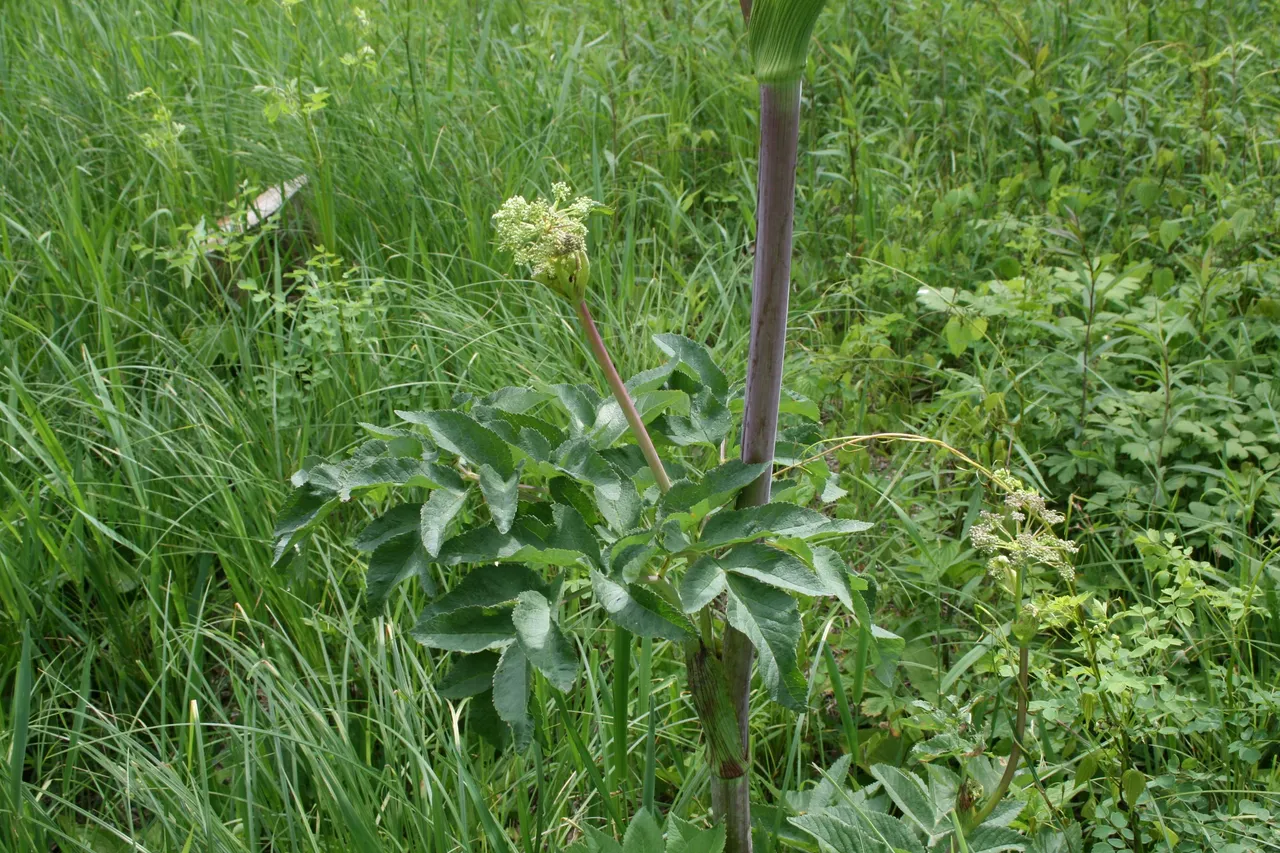
Great Angelica Node

Giant Hogweed Umbrel
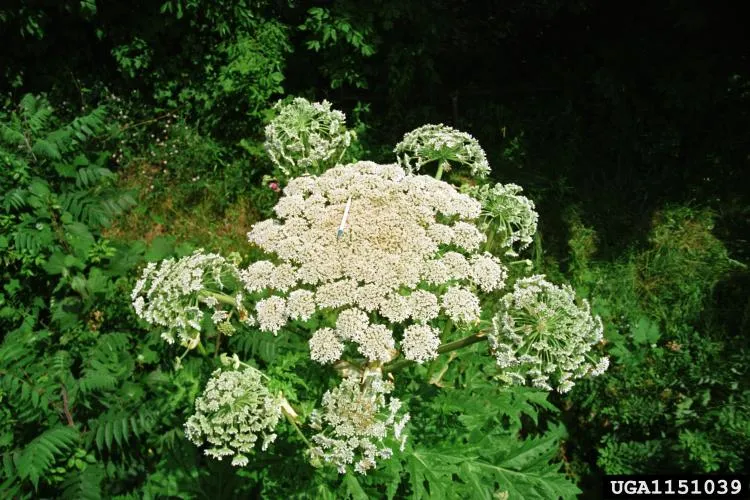
Giant Hogweed Node with Color Splotching and Coarse Hairs
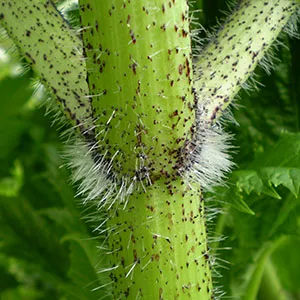
Phytophotodermatitis

Looking at Great Angelica's leaves, one will find very large, bipinnate compound leaves of .5 m or more in length that possess 3 to 5 leaflets per branch. Leaflets themselves are 1 - 12 cm in length with serrated margins, a dark green upper surface, and a pale, white-blue underside.
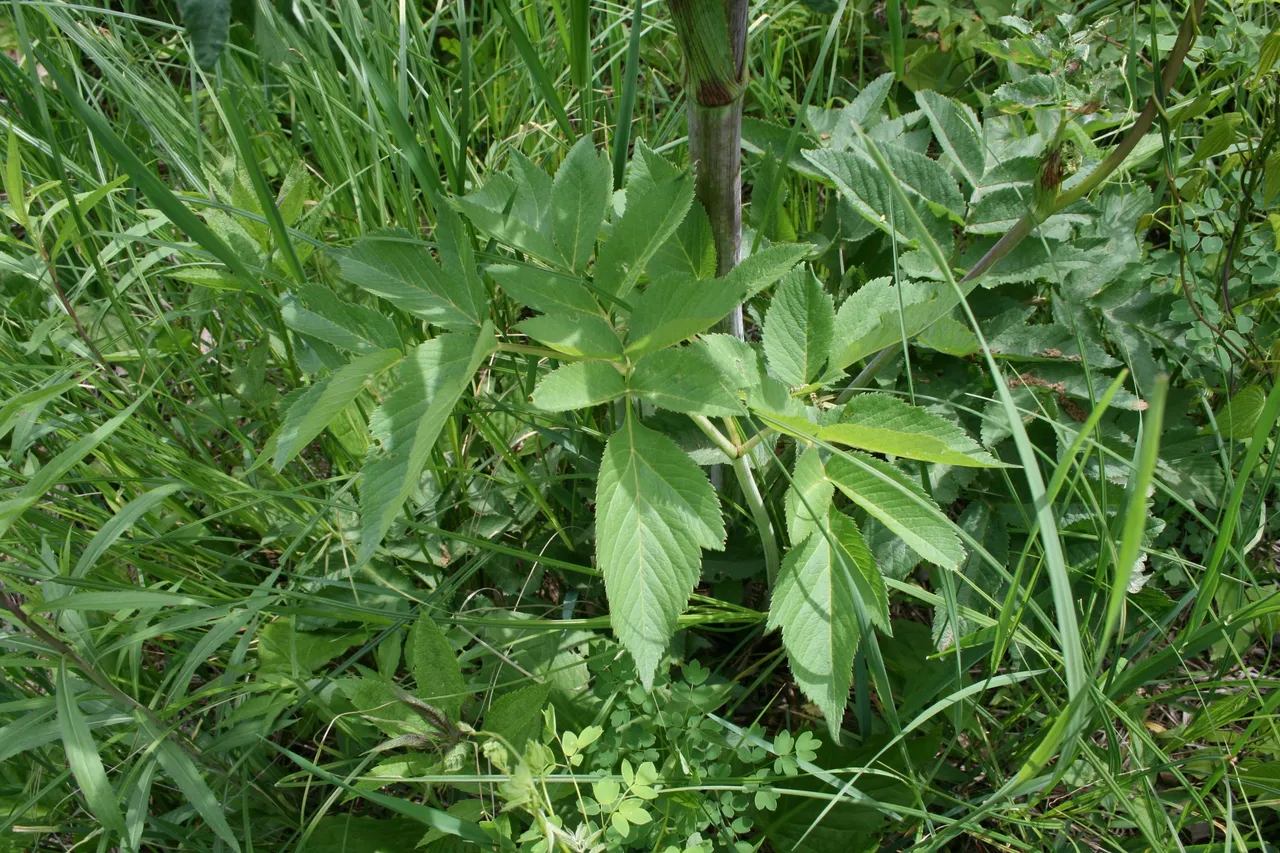
The upper stem of the plant ultimately terminates in highly rounded umbrels of up to 40 floral branches (umbellets), each of which then branch again into numerous green-white to pale yellow flowers. Great Angelica flowers are relatively small at only about 0.5 cm in diameter and possesses both 5 petals and 5 stamens each. Unlike most other look-alike species, the overall shape of Great Angelica umbrels take on a highly rounded, nearly spherical, shape.
Look-alikes, including the deadly toxic Poison Hemlock and Water Hemlock, have umbrels that tend to take on a more flattened or semispherical orientation. One mouthful of either Poison Hemlock or Water Hemlock is capable of killing a full-grown adult, so one must exercise extreme caution during their identification if they intend on consuming Great Angelica root or stem. Another less toxic look-alike species, Cow Parsnip, also lives in similar habitats as Great Angelica, though it can be identified by its bright green stem absent of any prominent purple hues. Again, due to the presence of furanocoumarin in its cells, the sap of Cow Parsnip is also capable of inducing Phytophotodermatitis in exposed individuals.
Great Angelica Umbrel

Water Hemlock Umbrel
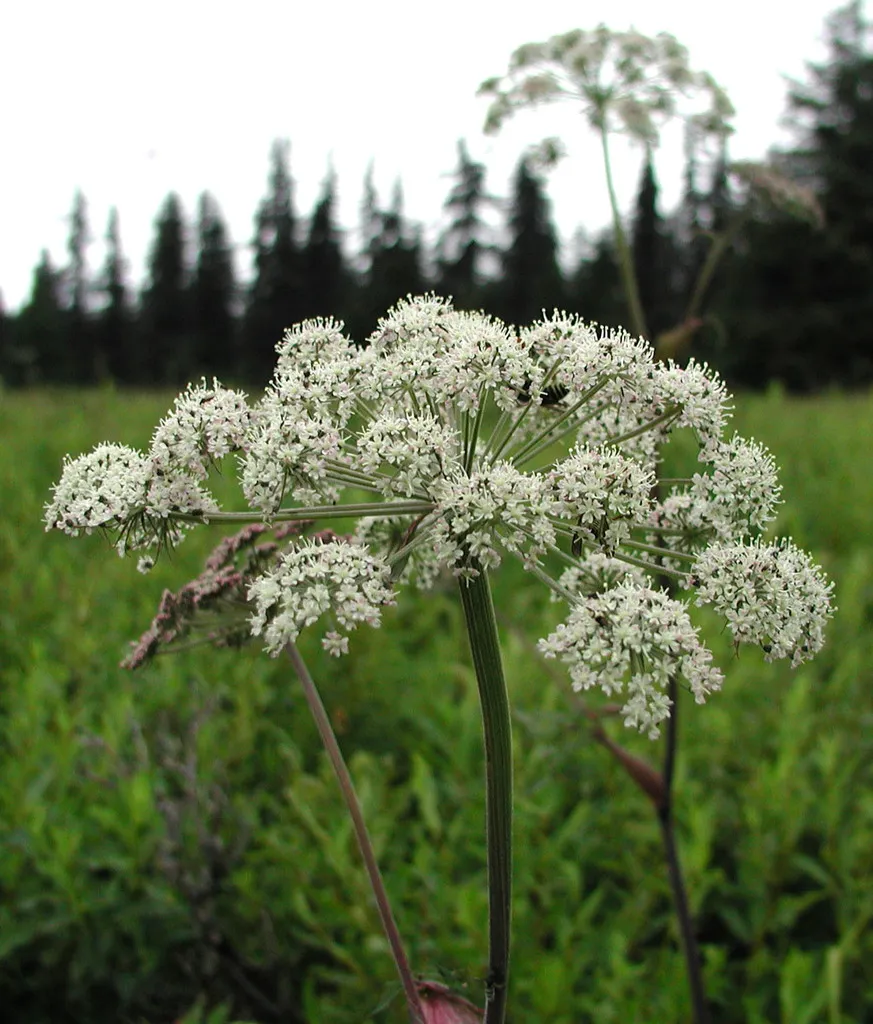
Cow Parsnip Stem
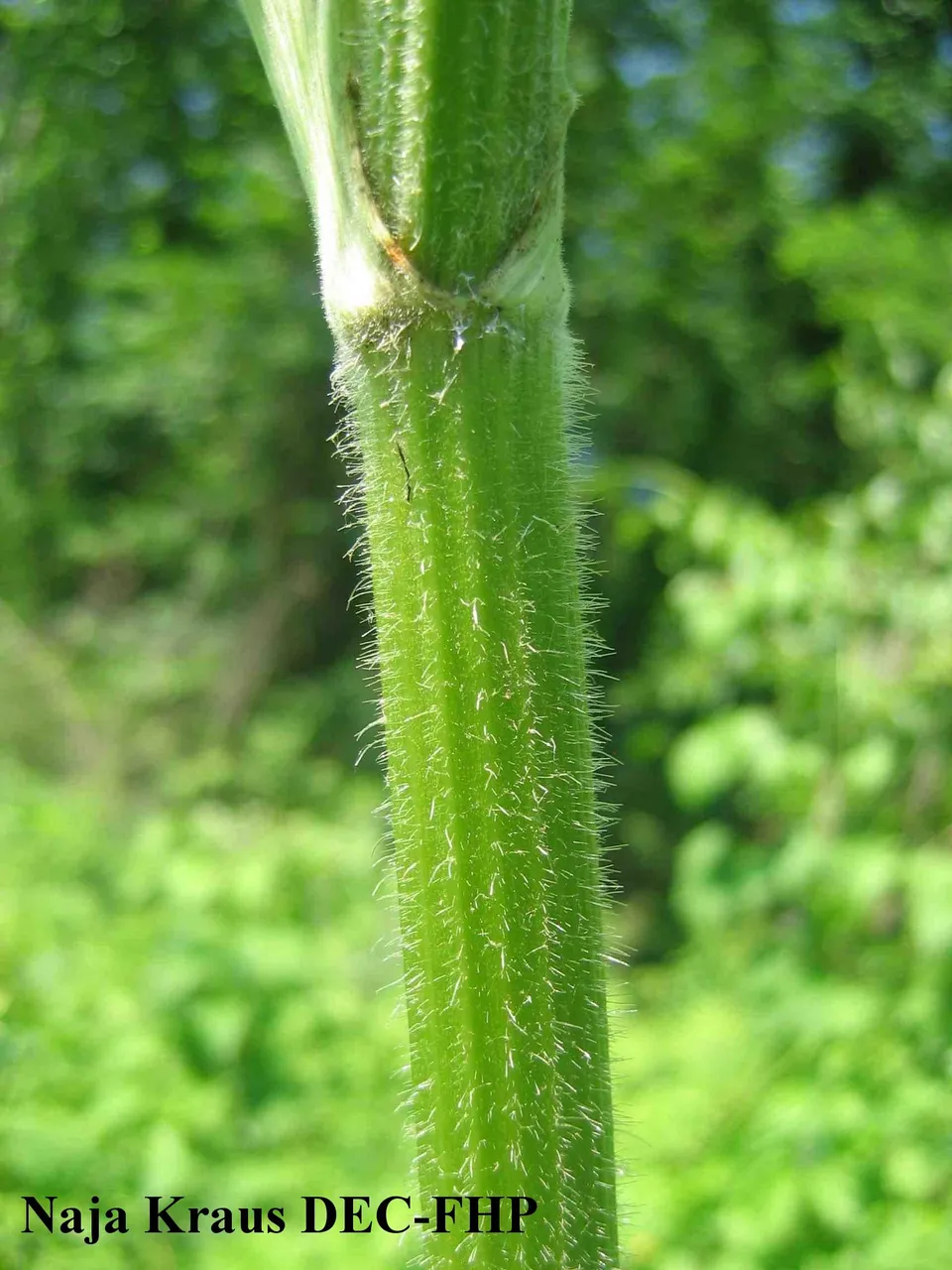
Cow Parsnip Umbrel
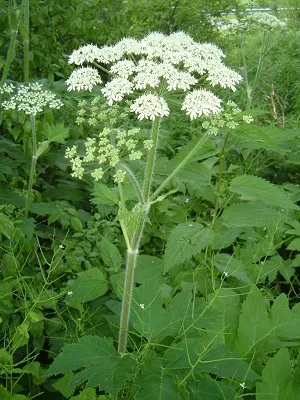
HISTORY & USE:
Great Angelica is most widely known for the use of both its stalk and aromatic roots for edible and medicinal purposes. The plant has a long history of medicinal and ceremonial use by several Native American cultures, including that of the Muscogee Nation (the modern-day descendants of the Creek Confederacy), where it has been used to to treat ailments ranging from back pains, to digestive and respiratory distress, to panic attacks. Early European settlers to the region are also known to have boiled the roots and stems before mixing them with natural syrups to create candies and sweeteners. The hollow stems can be prepared by being peeled and then boiled in two changes of water for around 15 minutes, resulting in a vegetable comparable in taste and structure to that of cooked celery.
Candied Angelica archangelica

The closely related European cousin of Great Angelica, Garden Angelica (Angelica archangelica), also has a well-documented history of use in Scandanavia as both a vegetable and medicinal plant that stretches back to at least the 10th century. Considered to be under the protection of Archangel Michael, preparations of the plant were historically considered as divinely influenced treatments for ailments ranging from broken bones, to alcoholism, to the bubonic plague itself. Today, the root of the plant is is more commonly utilized as a flavoring agent in liqueurs such as Chartreuse, Bénédictine, and Vermouth as well as other spirits like gin and absinthe. Although native to Northeastern Europe, Garden Angelica has since been introduced as an ornamental plant to North America, though no naturalized populations have yet been identified.
REFERENCES:
https://www.minnesotawildflowers.info/flower/angelica
https://www.illinoiswildflowers.info/wetland/plants/grt_angelica.html
https://en.wikipedia.org/wiki/Angelica_atropurpurea
https://www.dec.ny.gov/animals/72766.html
https://ohioline.osu.edu/factsheet/anr-35
https://en.wikipedia.org/wiki/Heracleum_maximum
http://www.ourherbgarden.com/herb-history/angelica.html#:~:text=The%20history%20of%20angelica%20includes,produce%20and%20market%20candied%20Angelica.
https://en.wikipedia.org/wiki/Angelica_archangelica#Use_and_history
My NFT Showroom gallery: https://nftshowroom.com/tych021/gallery
Creary Gallery: https://creary.net/@tych021/projects
Publish0x reflink: https://www.publish0x.com?a=M7e58kDYd2
PeakD reflink: https://peakd.com/register?ref=tych021
NFTShowroom reflink: https://nftshowroom.com/?r=tych021
Twitter: https://twitter.com/tych021
